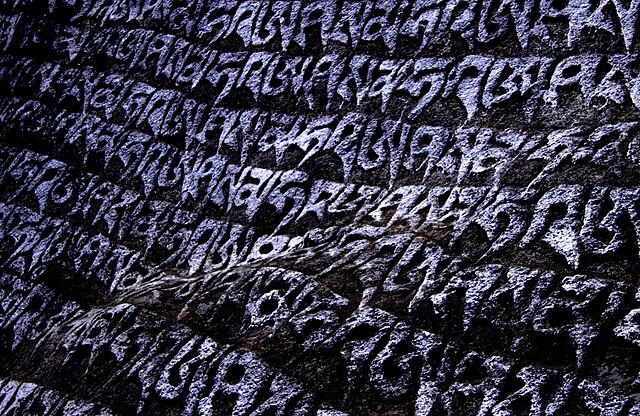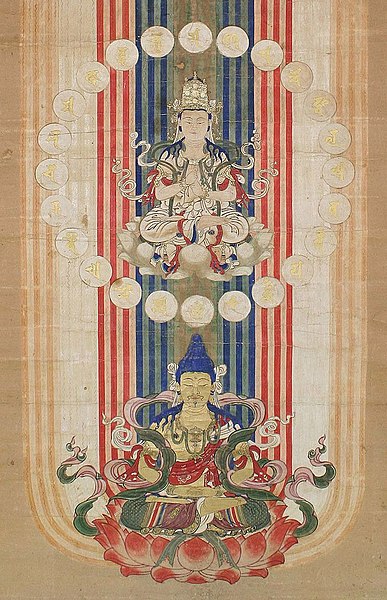Oṃ maṇi padme hūm̐ is the six-syllabled Sanskrit mantra particularly associated with the four-armed Shadakshari form of Avalokiteshvara, the bodhisattva of compassion. It first appeared in the Mahayana Kāraṇḍavyūhasūtra, where it is also referred to as the sadaksara and the paramahrdaya, or “innermost heart” of Avalokiteshvara. In this text, the mantra is seen as the condensed form of all Buddhist teachings.
Stele of Sulaiman, erected at the Mogao Caves in 1348 to commemorate the donations of Sulaiman, Prince of Xining. It includes the six-syllable mantra written in six different scripts: Lantsa [1st row], Tibetan [2nd row], Uighur [far left], 'Phags-pa [left], Tangut [right], Chinese [far right].
A Tibetan sand mandala of Avalokitesvara, a key element of the tantric initiation ritual required to practice the mantra according to the Kāraṇḍavyūha
At Yonghe Temple, Beijing.
"om mani padme hūṃ", mani stone carved in Tibetan script outside the Potala Palace in Lhasa
A mantra or mantram is a sacred utterance, a numinous sound, a syllable, word or phonemes, or group of words believed by practitioners to have religious, magical or spiritual powers. Some mantras have a syntactic structure and a literal meaning, while others do not.
Mantras written on a rock near Namche Bazaar Nepal
Hare Krishna devotees in Amsterdam carrying a poster with the Hare Krishna Mantra
Japanese Mandala of the Mantra of Light, an important mantra of the Shingon and Kegon sects
A Japanese depiction of the Amida Triad as Seed Syllables (in Siddham Script). Visualizing deities in the form of seed mantras is a common Vajrayana meditation. In Shingon, one of the most common practices is Ajikan (阿字觀), meditating on the mantric syllable A.








